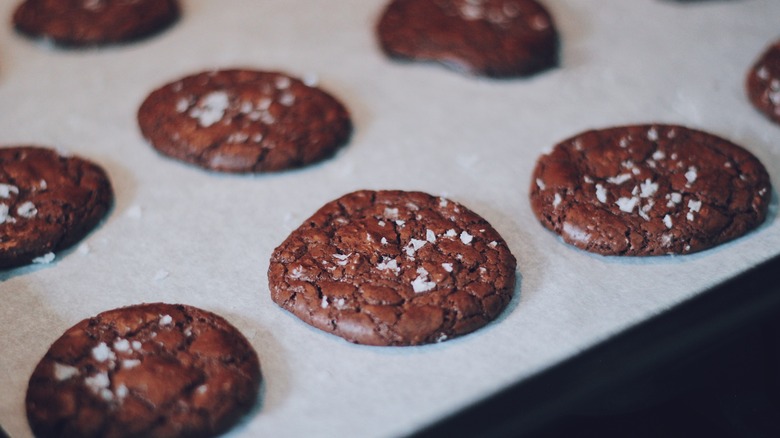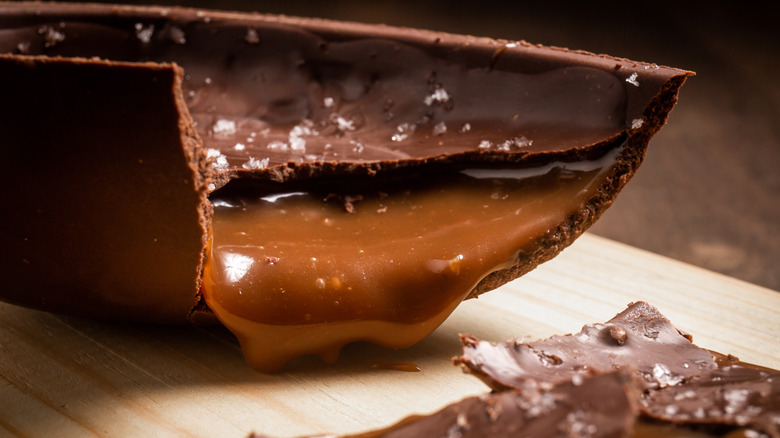Why You Should Add Salt When Cooking With Chocolate
Can't stop dipping salty french friends into creamy chocolate shakes? You're not the only one craving this distinctive salty-sweet combination. Chefs and bakers alike have good reasons to sprinkle sea salt over the top of chocolate cookies, garnish rich cheesecakes with flaky crumbles, and slather enticing moles onto savory dishes. We have science to blame.
Our bodies crave salty, sugary foods, notes an article on Business Insider. In fact, we are physiologically wired to respond to calorically dense cuisine: our tongues are coated with cells that activate when sweet and salty tastes indicate a boost of energy is on the way (via Royal Wholesale Chocolate). Once these taste bud cells are engaged, according to findings published in Frontiers in Human Neuroscience, sweet compounds send signals to the brain. According to Vox Creative, as dopamine is released and our body's physiological response to stress drops, a feedback loop is established. Salt enhances this process.
Wired for salty-sweet treats
The Chocolate Journalist suggests thinking of salt as a type of alarm that helps taste buds find and detect sugar. In research published in Proceedings of the National Academy of Sciences, scientists discovered that extra sugar receptors on the tongue's sweet-sensing cells only respond to sugar when salt is present. Not to mention, salt brings an unexpected crunch to recipes.
The Academy of Chocolate Arts recommends pairing chocolate with salt to enhance chocolate's subtle, natural nuances, as variations in chocolate can result from harvested cocoa beans and chocolatiers' individual approaches to production. From choosing the wrong type of chocolate to incorrectly storing specialty bars, there are plenty of mistakes to be made when using chocolate in the kitchen. Don't let forgetting salt be one of them.
Not sure how to begin? Grouper Sandwich uses fine Himalayan pink salt. You can also try crunchy sea salt as a topping for these luxurious chocolate treats.

